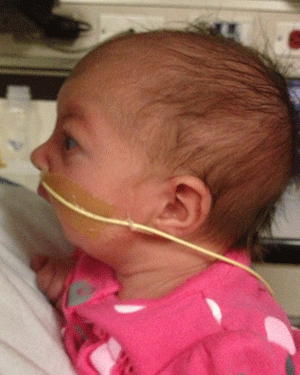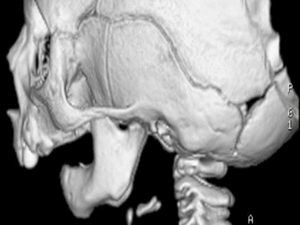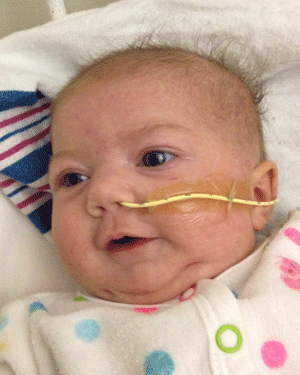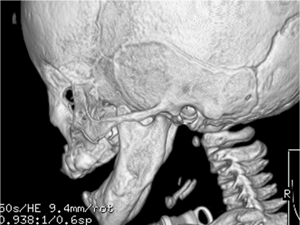How Mandibular Distraction Works
Mandibular distraction is usually performed in the first several weeks of life. An incision is made and the jaw bone is carefully separated to allow a distraction device to be attached to the bone, on both sides of the jaw. The device has two screws that are turned to further separate the bone after surgery. These screws are turned approximately every eight hours for about 15 days. By pulling the ends of the bone apart, new bone will form to fill in the gap and heal. This creates a longer jaw bone and provides more space for the tongue so that it no longer blocks the airway. The device remains in place for 12 weeks to allow new bone to form. The device is surgically removed at the end of treatment.
Most babies stay in the NICU during the entire process. In some cases and with special education from our team, parents will complete the distraction process at home after learning how to turn and care for the screws.
The goal of mandibular distraction is to provide the baby a normal-sized jaw that allows him or her to eat, breathe and sleep normally. Most babies go on to have normal jaw growth and meet their speech and developmental milestones.
A Team Approach
We have an entire team dedicated to supporting families through the distraction process, including neonatologists, otolaryngologists, geneticists, plastic surgeons, anesthesiologists, pulmonologists, gastroenterologists, dietitians, NICU nurses, and therapists, all working together to achieve the best results for patients and families.
No matter the need, CHOC has the pediatric expertise for every step along the way in a baby’s care and development. The NICU works closely with the Feeding Program and the Sleep Center to further evaluate and treat a baby whose condition affects their ability to eat and sleep safely after the distraction surgical procedure. Parents and families are vital members of the team as well and are partners in every stage of their baby’s care.
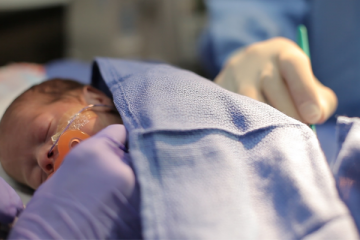 When it comes to surgery, babies present a unique challenge because of their small size and complex conditions. Their health can change in an instant, requiring quick action and expertise.
When it comes to surgery, babies present a unique challenge because of their small size and complex conditions. Their health can change in an instant, requiring quick action and expertise.